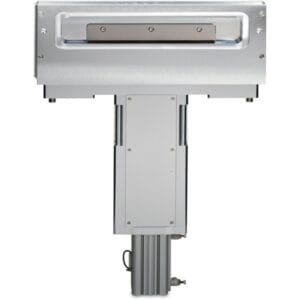ASA HV Reducer Full Nipples (Grooved & Flat Flanges): Reliable Multi-Size Transitions for High Vacuum Systems
The ASA HV Reducer Full Nipples (Grooved & Flat Flanges) from TFM are engineered to provide robust and leak-tight connections between ASA flanges of differing sizes within high vacuum (HV) systems. These spools are constructed from high-quality 304L stainless steel tubing, delivering excellent mechanical strength, corrosion resistance, and vacuum compatibility in research, industrial, or process environments.
Each nipple features a pair of fixed ASA flanges—one grooved to accommodate an o-ring for sealing, and the other flat, creating a sexed flange pair that ensures vacuum integrity. The reducer design allows you to adapt between two different nominal pipe sizes, making these components ideal for vacuum setups with mixed flange dimensions.
Key Features:
Reducer Configuration
Designed specifically to connect two ASA flanges of different sizes, enabling system expansion or reconfiguration without full redesign.Grooved & Flat Flange Ends
One end features a groove for o-ring sealing, while the other is flat, forming a standard ASA vacuum joint for reliable leak resistance.304L Stainless Steel Construction
Offers durability under vacuum conditions and resilience against corrosive gases and thermal cycling, suitable for cleanroom and UHV-prep environments.Wide System Compatibility
Fits seamlessly into existing ASA flange-based systems—commonly found in HV chambers, foreline networks, and mechanical pump manifolds.Customization Available
While standard lengths and diameters are available, TFM also supports tailored fabrication to suit non-standard dimensions or integration requirements.
Applications:
Connecting chambers or components with mismatched flange sizes
Facilitating foreline or pump transitions without the need for custom reducers
Building or modifying HV manifolds, gas delivery paths, or pump trees
Suitable for thin-film deposition tools, analytical instrumentation, and vacuum R&D labs
With a complete range of ASA HV nipples, including standard, half, and reducer configurations—in both grooved and flat flange styles—TFM ensures maximum flexibility and reliability for your high vacuum system design.





Reviews
There are no reviews yet.